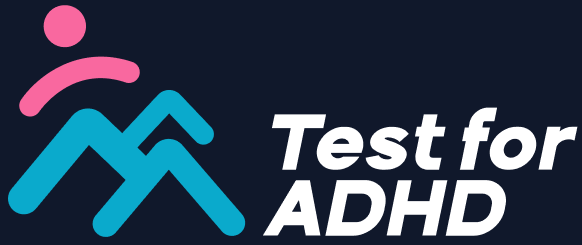Recognizing the Signs: A Complete Guide to Adult ADHD Symptoms
Attention-Deficit/Hyperactivity Disorder (ADHD) isn’t just a childhood condition. Millions of adults live with ADHD, often undiagnosed, grappling with challenges that can impact their careers, relationships, and daily lives. Understanding the signs of adult ADHD is the first crucial step toward seeking help and improving your quality of life.
While ADHD symptoms can vary significantly from person to person, they generally fall into three main categories: inattention, hyperactivity, and impulsivity. It’s important to remember that everyone experiences these traits occasionally; it’s their pervasiveness, persistence, and impact on functioning that distinguish ADHD.
1. Symptoms of Inattention in Adults
Inattention in adults with ADHD often looks different from the classic image of a fidgeting child. It’s less about a lack of effort and more about difficulty sustaining focus, particularly on tasks that aren’t inherently stimulating.
- Difficulty Focusing on Tasks: You might struggle to maintain attention during long meetings, while reading lengthy documents, or when completing tedious tasks.
- Poor Organizational Skills: This is a hallmark symptom. You might find it challenging to organize your workspace, paperwork, or even your thoughts. Deadlines are often missed, and planning feels overwhelming.
- Easily Distracted: Minor stimuli – a buzzing phone, a conversation nearby, a thought popping into your head – can derail your focus quickly. You might find yourself constantly pulled away from what you intend to do.
- Forgetfulness in Daily Activities: This goes beyond occasional forgetfulness. You might frequently forget appointments, important dates, where you put everyday items (keys, phone, wallet), or even what you were just about to do.
- Difficulty Following Instructions: Whether it’s a complex set of directions or a multi-step task, you might struggle to process and remember instructions, leading to mistakes or incomplete work.
- Careless Mistakes: Due to a lack of sustained attention, you might overlook details, make silly errors, or rush through tasks without adequate review.
- “Zoning Out” or Daydreaming: You might frequently find your mind wandering during conversations, lectures, or tasks, leading to a sense of being “elsewhere.”
- Procrastination: The sheer overwhelm of starting a task, especially a long or uninteresting one, can lead to chronic procrastination, often followed by last-minute rushes.
2. Symptoms of Hyperactivity in Adults
Unlike childhood hyperactivity, which often manifests as overt physical restlessness, adult hyperactivity can be more internalized and subtle.
- Inner Restlessness: This is a very common adult symptom. You might feel a constant need to be doing something, an inability to relax, or a persistent feeling of being “on edge.”
- Difficulty Staying Still: While you might not be running around, you might find yourself fidgeting, tapping your feet or hands, pacing, or frequently changing positions while seated.
- Excessive Talking: You might be known for talking a lot, interrupting others, or having difficulty waiting for your turn in conversations.
- Difficulty Engaging in Quiet Activities: Relaxing with a book, meditating, or engaging in calm hobbies might feel incredibly challenging and even irritating.
- Feeling Driven by a Motor: Many adults describe feeling like they are constantly “on the go” or internally compelled to be active, even when they wish to rest.
- Chronic Boredom or Restlessness: A low tolerance for boredom can lead to constantly seeking new stimulation or feeling antsy when things are slow.
3. Symptoms of Impulsivity in Adults
Impulsivity refers to acting without thinking through the consequences, often leading to immediate gratification but long-term problems.
- Impulsive Spending: Making quick, unplanned purchases that you later regret.
- Interrupting Others: Blurting out answers, finishing others’ sentences, or cutting people off in conversation.
- Rash Decisions: Making important life decisions (career changes, relationship choices) without sufficient consideration.
- Difficulty Waiting Your Turn: This can manifest in conversations, in lines, or in traffic.
- Engaging in Risky Behaviors: This could include reckless driving, substance use, or other activities with potentially negative outcomes.
- Poor Self-Control: Difficulty regulating emotions, leading to angry outbursts or frustration that seems disproportionate to the situation.
- Frequent Job Changes or Relationship Instability: Due to impulsive decisions or difficulties managing the demands of long-term commitments.
The Three Presentations of Adult ADHD
Based on the predominant symptoms, adult ADHD is categorized into three presentations:
- Predominantly Inattentive Presentation: If you primarily experience symptoms of inattention.
- Predominantly Hyperactive-Impulsive Presentation: If you primarily experience symptoms of hyperactivity and impulsivity.
- Combined Presentation: If you experience significant symptoms from both inattention and hyperactivity-impulsivity.
When to Seek Professional Help
If you recognize many of these symptoms in yourself and they have been persistent since childhood, negatively impacting your daily life, relationships, or work, it’s time to consider seeking a professional evaluation. An accurate diagnosis from a qualified healthcare provider is the first step towards understanding your challenges and accessing effective treatment options. Don’t let undiagnosed ADHD hold you back – recognition is the key to managing your symptoms and thriving.



